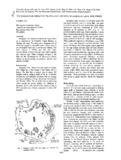A technical and economic evaluation of supplemental feeding strategies for Nile tilapia (Oreochromis niloticus L.) reared in lake-based cages
Share
| dc.contributor.author | Romana-Eguia, Maria Rowena R. | |
| dc.contributor.author | Samoranos, Mark Neil | |
| dc.contributor.author | Aya, Frolan | |
| dc.contributor.author | Alava, Veronica R. | |
| dc.contributor.author | Salayo, Nerissa D. | |
| dc.date.accessioned | 2022-03-16T07:09:14Z | |
| dc.date.available | 2022-03-16T07:09:14Z | |
| dc.date.issued | 2022-03 | |
| dc.identifier.citation | Romana-Eguia, M. R. R., Samoranos, M. N., Aya, F. A., Alava, V. R., & Salayo, N. D. (2022). A technical and economic evaluation of supplemental feeding strategies for Nile tilapia (Oreochromis niloticus L.) reared in lake-based cages. Israeli Journal of Aquaculture - Bamidgeh, 74, IJA.74.2022.1687894. | en |
| dc.identifier.issn | 0792-156X | |
| dc.identifier.uri | http://hdl.handle.net/10862/6307 | |
| dc.description.abstract | Tilapia cage farming in eutrophic lakes uses low stocking densities since tilapias can thrive mainly on natural food or minimal supplementary feeding. For semi-intensive Nile tilapia cage culture, feeding strategies to improve productivity are adopted based on technical viability and cost efficiency, as assessed in the present study. Tilapia fingerlings stocked in triplicate cages per treatment were reared in Laguna de Bay, Philippines for five months, one run each during the dry and wet seasons. The treatments were: I – UNFED or no feeding; II - FED, fish fed for the entire 155 days; III - D45, fish fed from day 45 to harvest; and IV - D75, or fish fed from day 75 to harvest. Average weight gain or AWG (153.18 g and 225.85g, for dry and wet seasons, respectively) were highest in FED. Growth parameters in all fed treatments were significantly higher (p<0.05) than in UNFED for both seasons. Survival rates were higher during the wet season (66-70%) compared to the dry season (35-37%). Moreover, in the wet season, when the lake’s primary productivity is low, full feeding can be done without compromising lake water quality. Results showed that it favored high AWG, survival, reasonable market price, and profit. | en |
| dc.description.sponsorship | SMFI–BMEG and SEAFDEC/AQD are acknowledged for the support provided in the conduct of this project (study code: TV-05-F2013B and budget code: 6141-T-RD-BMEG01/6141-B-TV-F0114B). | en |
| dc.language.iso | en | en |
| dc.publisher | AquacultureHub Inc. | en |
| dc.relation.uri | https://ija.scholasticahq.com/api/v1/articles/33604-a-technical-and-economic-evaluation-of-supplemental-feeding-strategies-for-nile-tilapia-oreochromis-niloticus-l-reared-in-lake-based-cages.pdf | en |
| dc.subject | supplemental feeding | en |
| dc.subject | Nile tilapia | en |
| dc.subject | lake cage farming | en |
| dc.subject | tilapia | en |
| dc.title | A technical and economic evaluation of supplemental feeding strategies for Nile tilapia (Oreochromis niloticus L.) reared in lake-based cages | en |
| dc.type | Article | en |
| dc.citation.volume | 74 | |
| dc.citation.spage | IJA.74.2022.1687894 | |
| dc.citation.journalTitle | Israeli Journal of Aquaculture - Bamidgeh | en |
| dc.subject.asfa | tilapia culture | en |
| dc.subject.asfa | feeding | en |
| dc.subject.asfa | growth | en |
| dc.subject.asfa | eutrophic lakes | en |
| dc.identifier.doi | 10.46989/001c.33604 | |
| dc.subject.scientificName | Oreochromis niloticus | en |
このアイテムのファイル
| ファイル | サイズ | フォーマット | 閲覧 |
|---|
このアイテムは次のコレクションに所属しています
-
AQD Journal Articles [1223]
These papers were contributed by AQD staff to various national and international journals



